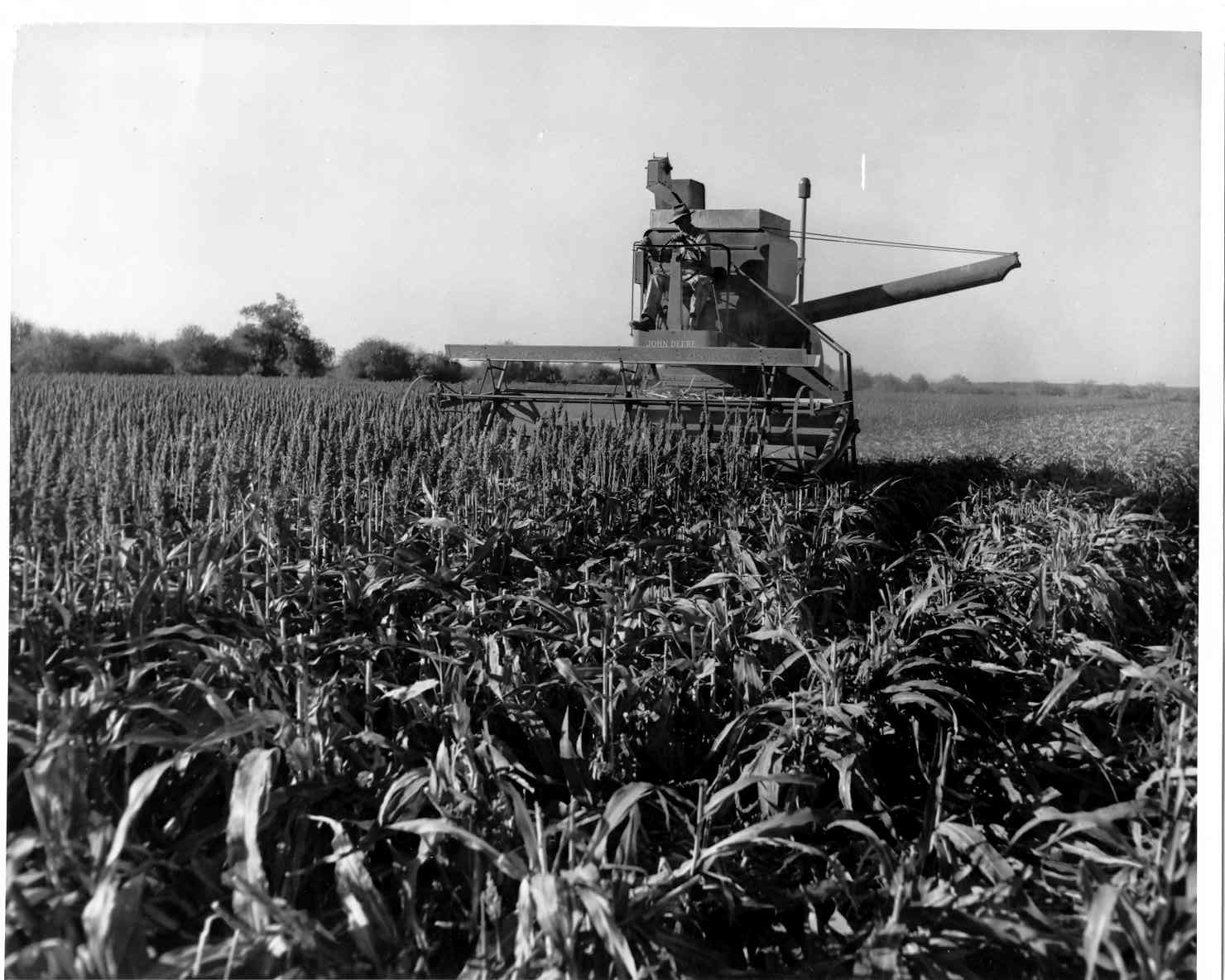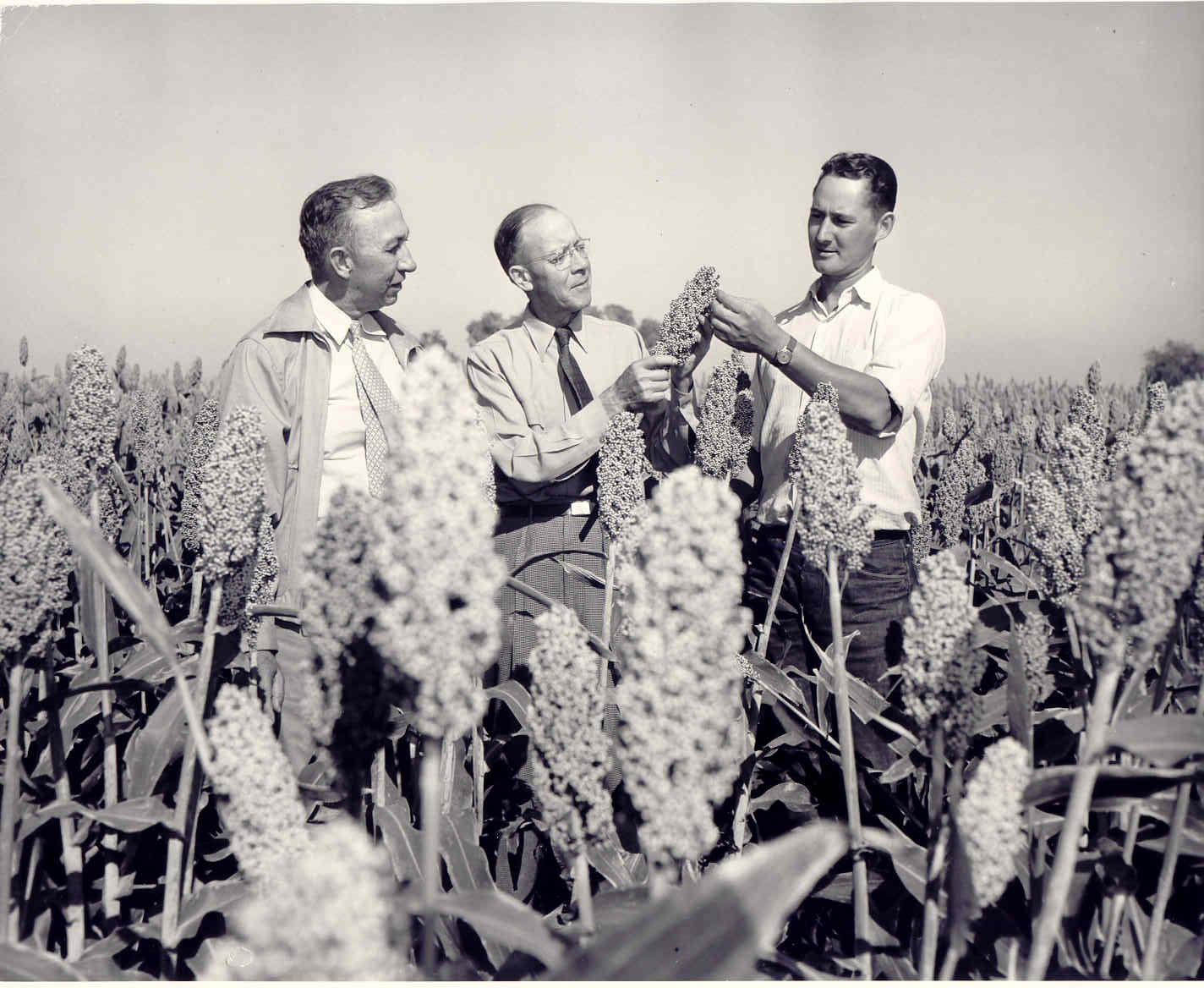Scientific Agriculture
Scientific Agriculture
Litchfield Park, Arizona
 In the 1920s many changes took place for the Goodyear Tire & Rubber Company in Arizona. The Southwest Cotton Company, a subsidiary of Goodyear, was in Arizona to plant cotton for their pneumatic tire cord and had several thousand acres under cultivation. In the early 1920s the price of cotton fell and then the 1929 Depression and Stock market crash changed the scenario of the Southwest Cotton Company.
In the 1920s many changes took place for the Goodyear Tire & Rubber Company in Arizona. The Southwest Cotton Company, a subsidiary of Goodyear, was in Arizona to plant cotton for their pneumatic tire cord and had several thousand acres under cultivation. In the early 1920s the price of cotton fell and then the 1929 Depression and Stock market crash changed the scenario of the Southwest Cotton Company.
Goodyear had three active ranches at this time. The Marinette Ranch was sold to Del Webb and he created Sun City. The Goodyear Ranch in Chandler was sold and was changed to an area now called Ocotillo.
Many changes took place on the Litchfield Ranch after cotton was no longer needed for Goodyear tires. Rayon, a textile fiber, was introduced in the early 1930s as a tire cord and in the late 1930s steel belted radial tires were introduced.
Goodyear considered leaving Arizona, but Mr. Litchfield loved it and wanted to stay. There had been many other exciting things happening on the ranch. Crop rotation methods were implemented to replenish the soil and utilize the land when cotton was out of season. Scientific feed for cattle was produced and was a major use of the land. Other special activities started such as Tire & Farm Equipment Testing and the Apprentice Farmer program.
An evolution of farming methods and techniques were underway at this time. The Southwest Cotton Company served as an agriculture laboratory in the trial and development of new types of farm equipment. Better land usage was provided by crop and field rotation and in this program alfalfa played an important role as it was found to be the best way to build up organic matter that was much needed in the soil. Alfalfa was sold through the production of hay and the fields were used as pasturage for beef cattle. Barley and sorghum grains were included in the crop rotations and were used as concentrates for feeding the cattle.
 The switch from cotton producer to a general all around farm operation occurred during the years from 1921-1931. Several new ventures were undertaken. Experiments with various types of fruit trees included citrus plantings of grapefruit, oranges, lemons, and tangerines. There were 220 acres of citrus fruit.
The switch from cotton producer to a general all around farm operation occurred during the years from 1921-1931. Several new ventures were undertaken. Experiments with various types of fruit trees included citrus plantings of grapefruit, oranges, lemons, and tangerines. There were 220 acres of citrus fruit.
Improved farming techniques increased crop yields and lowered acre costs. The crop rotation program helped with pest control, use of irrigation water, cultivation to keep weeds down and timely planting accounted for better yields.
Crop rotation included four years of alfalfa, one year for Hegari sorghum and Acala cotton for two years followed by winter wheat and barley. The fifth step was back to alfalfa. Smooth level fields brought higher yields and another specialty was improved and pure seed.
One of the largest farms all in one location in Arizona the Southwest Cotton Company had more than 16,000 acres with 12,000 acres of cultivated land. It was highly mechanized with 65 tractors and 52 trucks and automobiles plus scores of farm implements. The farms were very successful and in 1943 the name was changed to Goodyear Farms. The Goodyear Farms hosted a Farm Forum and invited people from several areas of farming to show the advances in farming. The Forum included farm implement manufacturers and their technical staffs, farm magazine editors and agricultural college professors. Many of the Goodyear executives also attended.
Management of the Goodyear Farms revolved around Kenneth B. McMicken, the general manager, who joined the Southwest Cotton Company in 1918. A cousin to Paul Litchfield, he was born in New York and was a farmer by choice. He was sent by Mr. Litchfield to the Valley of the Nile in 1919 to study Egyptian methods of irrigation and growing of long staple cotton. He was very active member of the Goodyear Farms and also with the U. S. Department of Agriculture.
Source:
Litchfield Park, Az Historical Society





